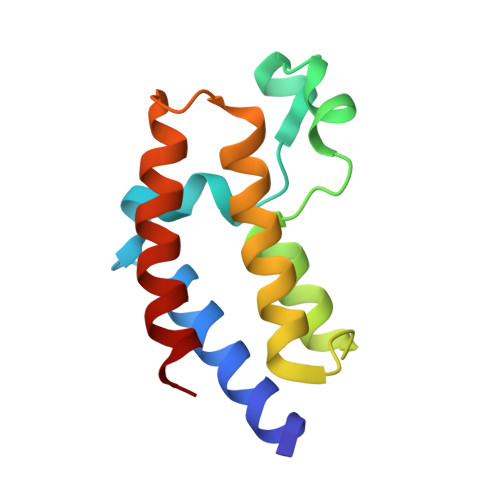Fragment-Based, Structure-Enabled Discovery of Novel Pyridones and Pyridone Macrocycles as Potent Bromodomain and Extra-Terminal Domain (BET) Family Bromodomain Inhibitors.
Wang, L., Pratt, J.K., Soltwedel, T., Sheppard, G.S., Fidanze, S.D., Liu, D., Hasvold, L.A., Mantei, R.A., Holms, J.H., McClellan, W.J., Wendt, M.D., Wada, C., Frey, R., Hansen, T.M., Hubbard, R., Park, C.H., Li, L., Magoc, T.J., Albert, D.H., Lin, X., Warder, S.E., Kovar, P., Huang, X., Wilcox, D., Wang, R., Rajaraman, G., Petros, A.M., Hutchins, C.W., Panchal, S.C., Sun, C., Elmore, S.W., Shen, Y., Kati, W.M., McDaniel, K.F.(2017) J Med Chem 60: 3828-3850
- PubMed: 28368119
- DOI: https://doi.org/10.1021/acs.jmedchem.7b00017
- Primary Citation of Related Structures:
5UEU, 5UEW, 5UEX, 5UEY, 5UEZ, 5UF0 - PubMed Abstract:
Members of the BET family of bromodomain containing proteins have been identified as potential targets for blocking proliferation in a variety of cancer cell lines. A two-dimensional NMR fragment screen for binders to the bromodomains of BRD4 identified a phenylpyridazinone fragment with a weak binding affinity (1, K i = 160 μM). SAR investigation of fragment 1, aided by X-ray structure-based design, enabled the synthesis of potent pyridone and macrocyclic pyridone inhibitors exhibiting single digit nanomolar potency in both biochemical and cell based assays. Advanced analogs in these series exhibited high oral exposures in rodent PK studies and demonstrated significant tumor growth inhibition efficacy in mouse flank xenograft models.
- AbbVie Inc. , 1 North Waukegan Road, North Chicago, Illinois 60064, United States.
Organizational Affiliation:

















